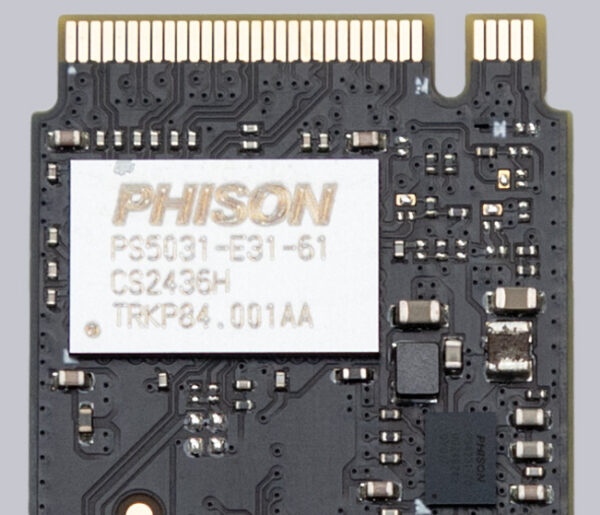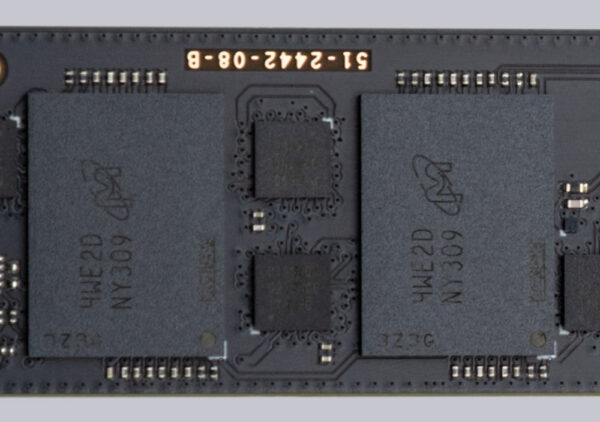
Layout, design and features …
The Crucial P510 M.2 SSD is manufactured in the standard 2280 format and therefore fits perfectly in desktop PCs and most laptops. Handhelds, on the other hand, often use the smaller 2230 format. Once we have removed the usual plastic sticker from the top, the components of the SSD are revealed.

At the heart of every SSD is the controller chip. In the P510, this comes from Phison and bears the description PS5031-E31-61. It is manufactured in a 7nm structure size at TSMC and has 4 channels for up to 8TB storage capacity. It supports the use of 3D TLC and QLC NAND memory chips, which gives SSD manufacturers leeway when selecting the memory type. The controller does not offer the option of connecting a DRAM cache to increase performance. This keeps the manufacturing costs low and the power consumption low; after all, this controller variant is not intended for high-performance SSDs. As a cache, 64MB of the PC’s main memory is used as a so-called host memory buffer.

Two Micron TLC 3D NAND chips with 276 layers each are available for data storage in the 2 TB variant we tested. The 1 TB variant only has one of these chips.

Crucial specifies the expected service life of the 2TB variant as 1200 TB TBW, which would mean 657.5GB of data written daily over a period of 5 years until the manufacturer’s warranty expires. For normal use, there is therefore no need to worry about the service life of the memory modules.
There are no components on the back of the PCB.

Crucial P510 2TB M.2 SSD Practical testing and benchmark results …

